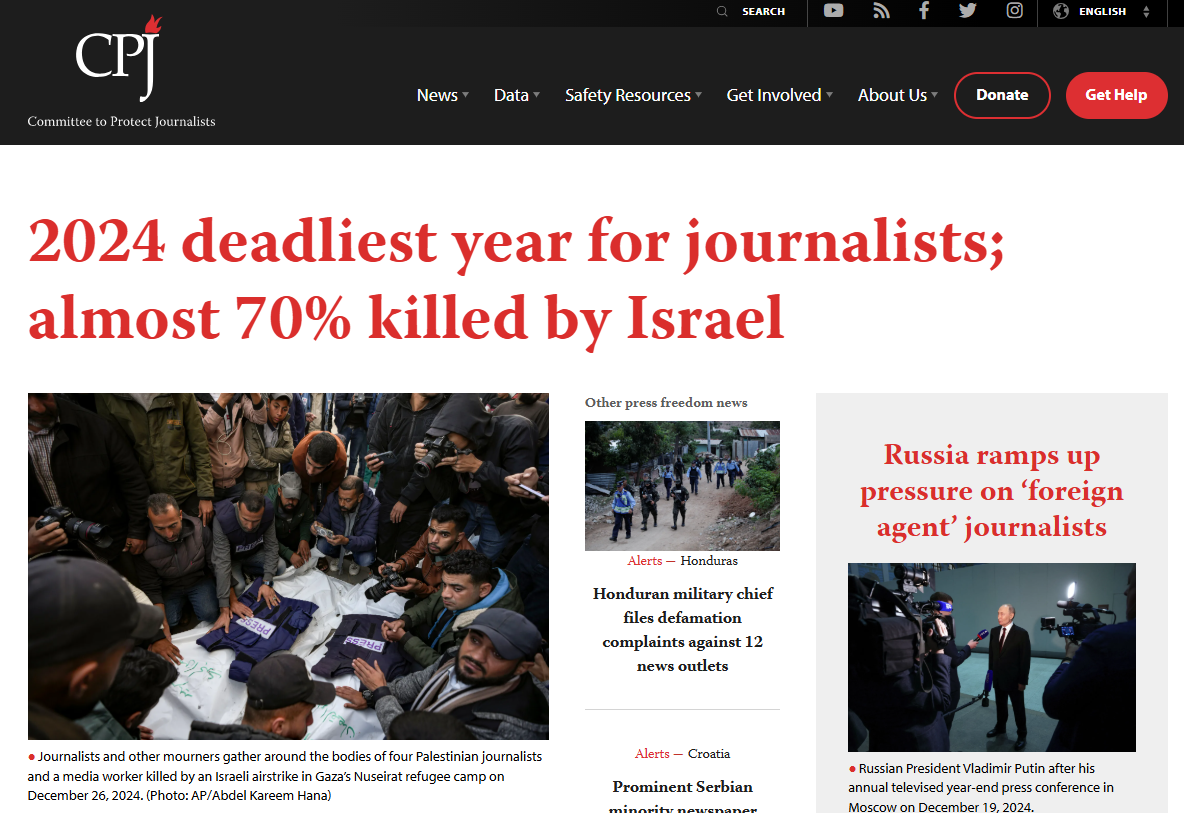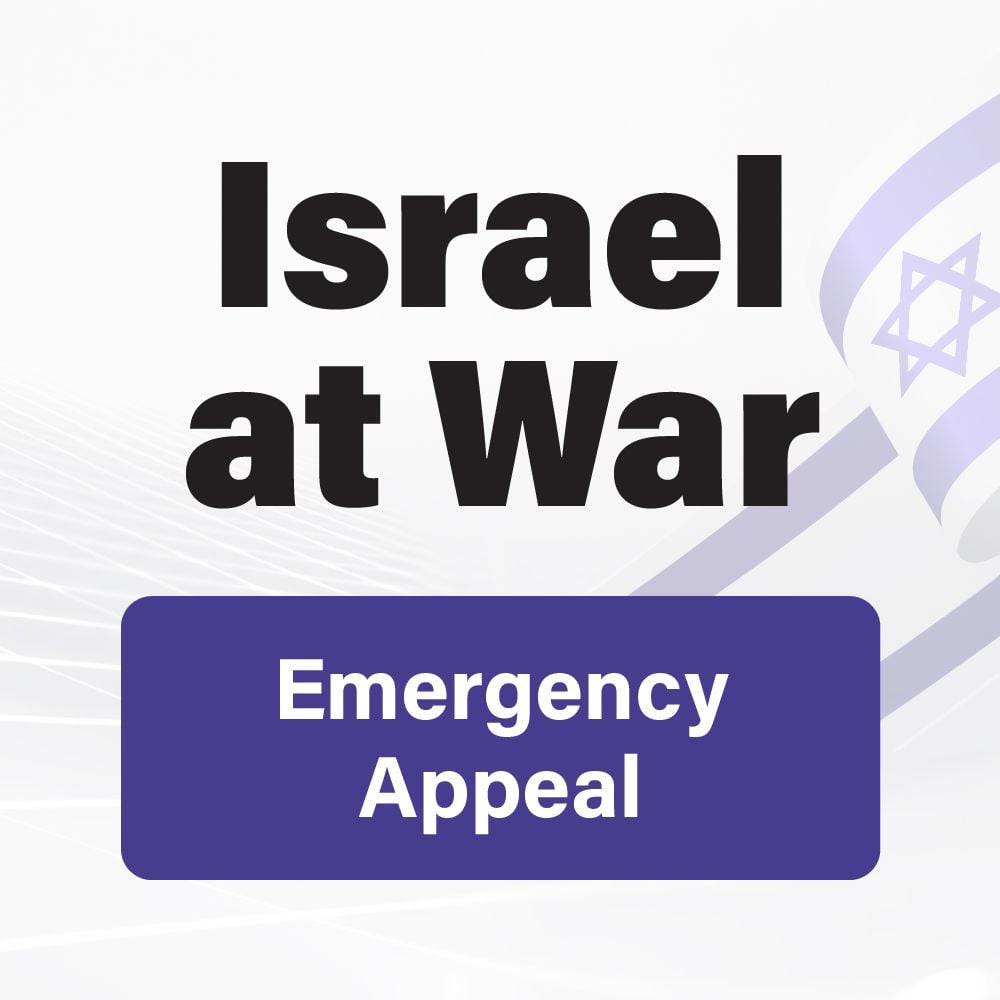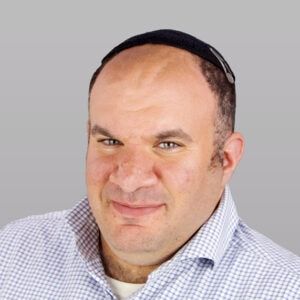In summing up the past year, the Committee to Protect Journalists (CPJ) has asserted that 2024 was the deadliest year for journalists in the organization’s history, with Israel responsible for almost 70% of these killed media workers.

As this is an astonishing statistic, it begs the question: How does the CPJ determine who is added to their database of media deaths and who is not? And more broadly, who does the organization consider to be a journalist?
According to its criteria, the CPJ includes journalists in its database if it “has reasonable grounds to believe they may have been killed in relation to their work: either killed accidentally in a conflict zone or on a dangerous assignment, or killed deliberately because of their journalism.”
While one might think that the CPJ’s list is focused on those who have been killed for their reporting, drawing attention to the dangers of being a journalist in hostile societies, the list is actually expanded to include anyone professing to be a media worker who is killed in a warzone, even if they are not actively taking part in their journalistic duties at the time of their deaths.
This broad criteria allows the CPJ to include, and highlight, the case of the Abu Skheil (also spelled Abu Sakhil) siblings, even though they were killed while staying in a Gazan school-turned-shelter alongside their father, who was the head of Islamic Jihad operations in Gaza.
The @guardian is mourning “two journalist siblings” who were killed alongside their father when Israel bombed a school.
What they should have said is Israel’s strike targeted the head of Islamic Jihad’s operations in Gaza, who was hiding in a school with his adult children. pic.twitter.com/Wy3S27R0yn
— HonestReporting (@HonestReporting) November 11, 2024
When it comes to defining which journalists are eligible to be included in its database of killed media workers, the CPJ writes that it does not include
journalists if there is evidence that they were inciting violence with imminent effect or directly participating as combatants in armed conflict at the time of their deaths. Under international humanitarian law, journalists affiliated with an armed non-state actor – even one classified as a terrorist group by some countries – are considered civilians, not combatants, unless they are directly participating in the hostilities.
These criteria allow the CPJ to include media workers affiliated with Hamas and Islamic Jihad TV and radio stations on its list of killed journalists.
However, the CPJ has also included certain people on its list even though, under international law, they would not be considered civilians.
For example, since Israel began its war against Hamas following the October 7 atrocities, the CPJ has included on its list people like Hamza Murtaja (who was reportedly a member of Hamas’ military wing), Mustafa Thuraya (who reportedly served as a Hamas deputy squad commander), and Mohammad Jarghoun (who reportedly served in Hamas’ al-Qassam Brigades).
According to international law, “when a journalist takes a direct part in the hostilities… he loses his immunity and becomes a legitimate target.”
It should be made clear that when it comes to “non-international armed conflicts” (which Israel’s war against Hamas falls under), international law does not view a combatant who “takes a direct part in the hostilities” as only when a person is actively engaged in combat but more broadly as
an individual whose continuous function involves the preparation, execution or command of operations amounting to direct participation in hostilities on behalf of an organized armed group is considered a member of that group (“continuous combat function”) and loses his protection against the dangers arising from military operations for the duration of that membership.
Thus, according to international law and the CPJ’s own criteria, the above-mentioned examples of Hamas terrorists who acted as journalists should not have been added to the organization’s killed media workers database.
Related Reading: Media Erase Links Between Dead Journalists and Hamas; Suggest Israel ‘Targeting Reporters’
How, then, does the CPJ justify including these terrorist-journalists on its list?
It appears that the CPJ simply dismisses the evidence provided by Israel against these journalists and implicitly absolves them of any wrongdoing.
For example, two of the killed Gazan journalists profiled in the end-of-the-year report are Hamza Al Dahdouh and Ismail Al Ghoul.
The IDF has provided evidence that Al Dahdouh was a member of Islamic Jihad’s electronic engineering unit and previously served as a deputy commander in the Zeitoun Brigade’s rocket force and that Al Ghoul was a member of Hamas’ elite Nukhba force and had taken part in the October 7 attacks.
However, rather than decry the manipulation of journalism in Gaza by internationally proscribed terror groups, the CPJ dismissed this evidence and included these terrorists on its list of killed media workers.
🚨 BREAKING: The IDF reveals that Hamza al-Dahdouh, the “journalist” killed in Gaza earlier this week, was a member of Palestinian Islamic Jihad’s rocket engineering apparatus.
Here’s a PIJ document with Hamza’s name on it. pic.twitter.com/KaJGCkIsxE
— Eitan Fischberger (@EFischberger) January 10, 2024
As an organization dedicated to defending journalists around the world, the CPJ should be at the forefront of the campaign to end the abuse of journalistic protections by terror groups in Gaza and to protect the hallowed status of the blue press vest.
However, rather than doing so, the CPJ has followed in the steps of other organizations to redefine international law in order to denigrate the Jewish state and its efforts to protect its citizens.
Liked this article? Follow HonestReporting on Twitter, Facebook, Instagram and TikTok to see even more posts and videos debunking news bias and smears, as well as other content explaining what’s really going on in Israel and the region. Get updates direct to your phone. Join our WhatsApp and Telegram channels!


